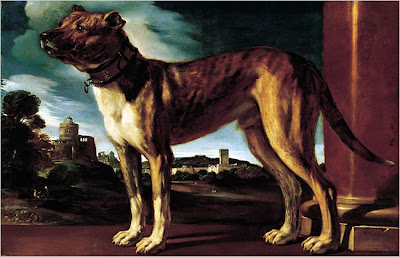 The latest version [as far as I know] of Merritt Clifton's list of selected dog attacks has been posted here, at Scribd, by someone who sucks at Photoshop.
The latest version [as far as I know] of Merritt Clifton's list of selected dog attacks has been posted here, at Scribd, by someone who sucks at Photoshop.The chox mix is still listed, along with the buff mastiff, the Dauschund, the East Highland Terrier and the Weimaeaner. The Australian cattle dog, the Australian blue heeler, the Blue heeler and the Queensland heeler are still listed as separate breeds.
One big change: the Analysis section of the report has been removed. And in his brief introduction, Clifton adds a paragraph defending his numbers. Click for big:

Seriously, I could beat my head on rocks. Merritt Clifton has no idea how many dog attacks there are each year by any given breed. No one does. The last time I checked, not one state kept track of dog attacks by breed. We do know that over 6,000 people were hospitalized as a result of dog attacks in the US in one year:
From the CDC’s Morbidity and Mortality Weekly Report: “Of an estimated 333,700 patients treated for dog bites in emergency departments (EDs) in 1994, approximately 6,000 were hospitalized.”For the record, Clifton's latest report states that "Pit bulls, Rottweilers, Presa Canarios, and their mixes" were responsible for a total of 1894 attacks "doing bodily harm" in the US and Canada from 1982 to 2008. Clifton still lumps every sort of mixed breed with "purebreds" [while stating that "only attacks by dogs of clearly identified breed type or ancestry are included"]. This approach has no basis in science or anything else.
Related — I think:
Law enforcement officials classified the dog in the Jan. 3 attack as a pit bull, boxer and black lab mix.Inconceivable. Really. Big hat tip to the most excellent Caveat for the link to that, er... fascinating article.
One magazine editor simplified this classification of dog.
“It’s a mongrel basically,” Wash.-based Animal People editor Merritt Clifton said.
He also said insurance representatives and dog wardens will often classify the dog by what type of dog it looks like. This classification has little to do with genetics, he said, because often shelter operators are simply attempting to determine the risk the dog will fight with other dogs.
Though some might label pit bulls as aggressive, Clifton said pit bulls are often reactive because of the fact they were originally trained to hunt rats on ships. However, because of their size and their inability to pull large amounts of cargo from ships, they were not considered apt for either job and instead began being bred for dogfighting on the docks.
This rat-killing, he said, has made them more reactive.
He also talked about the head-shaking mechanism pit bulls would use to kill the rat, which in bites causes the tearing of skin, causing more damage than other dog bites. However, he said this can be combated by pushing the arm or other appendage further into the dog’s mouth, which will force a release. [Source]









